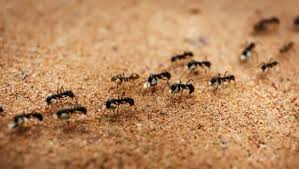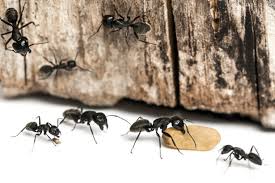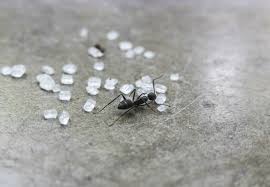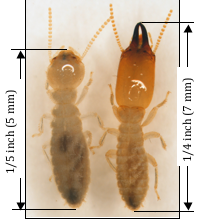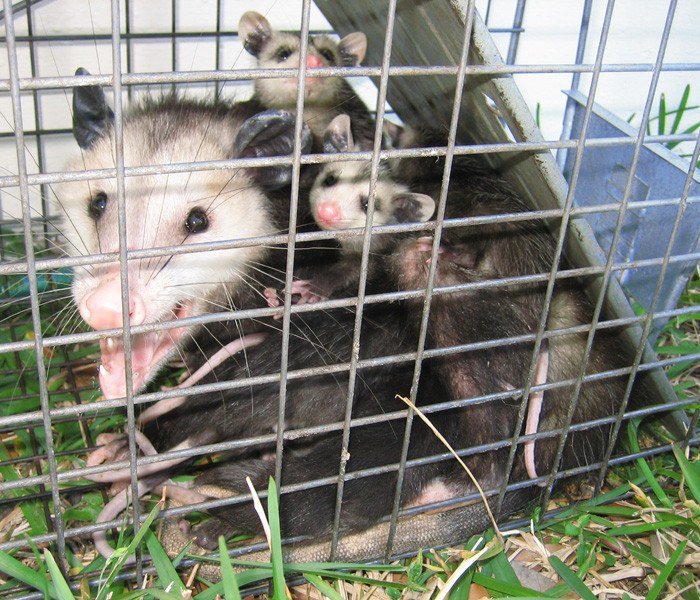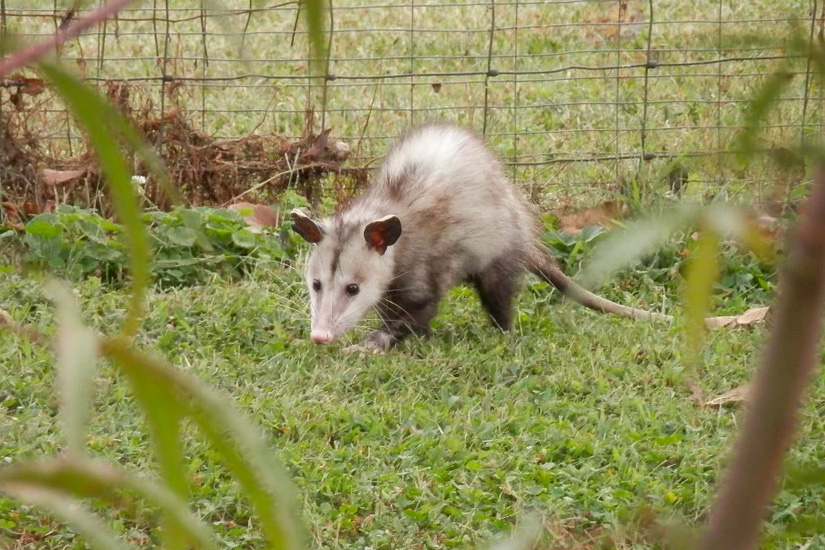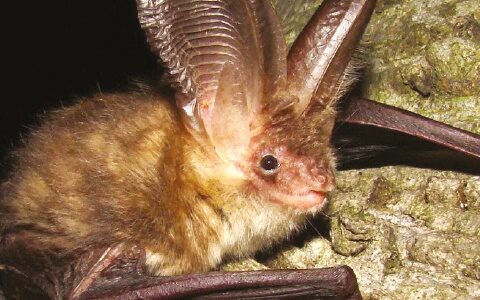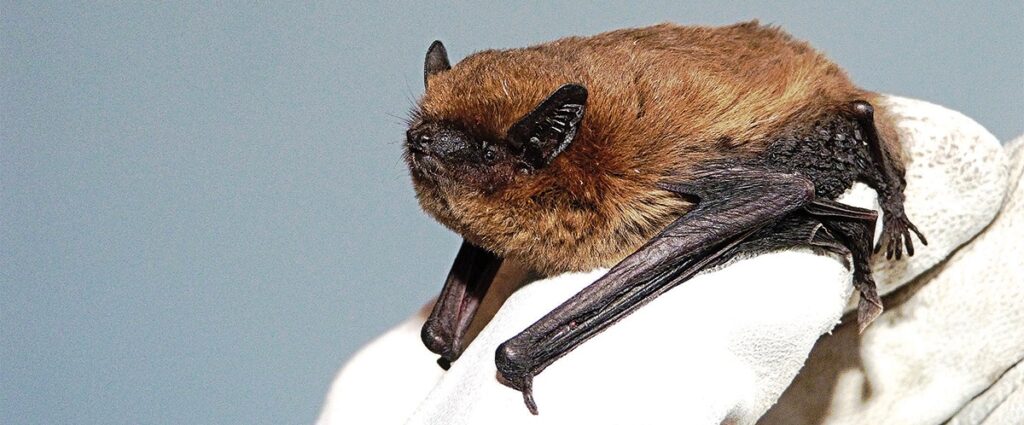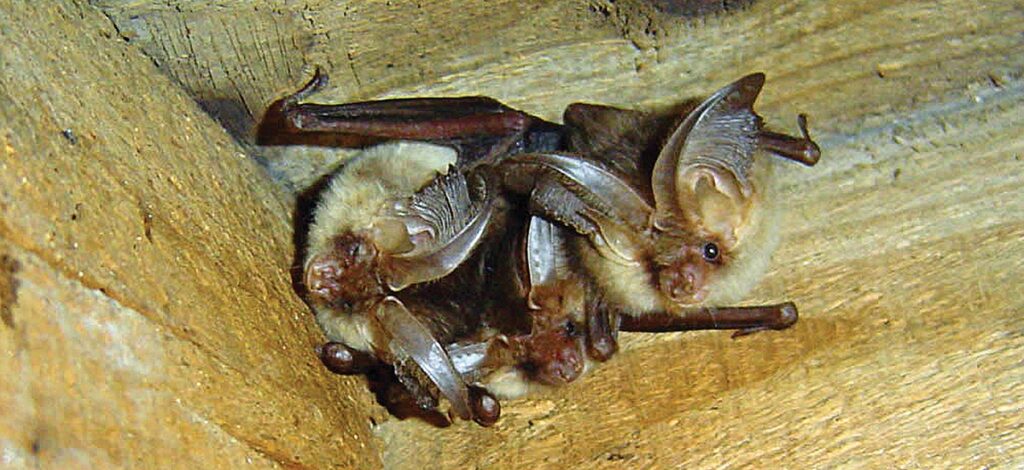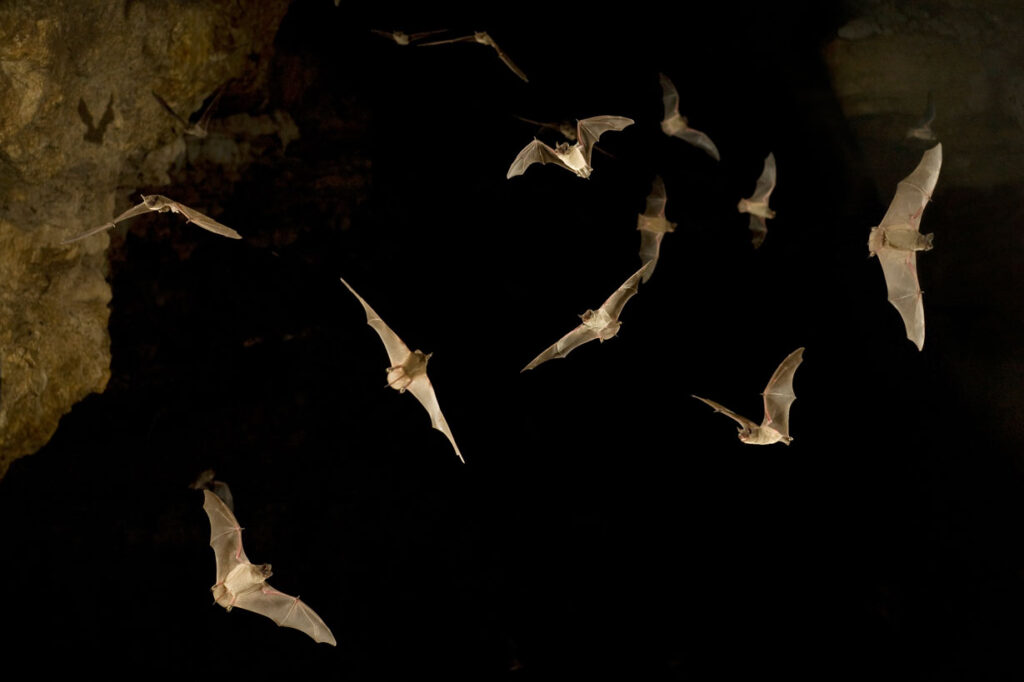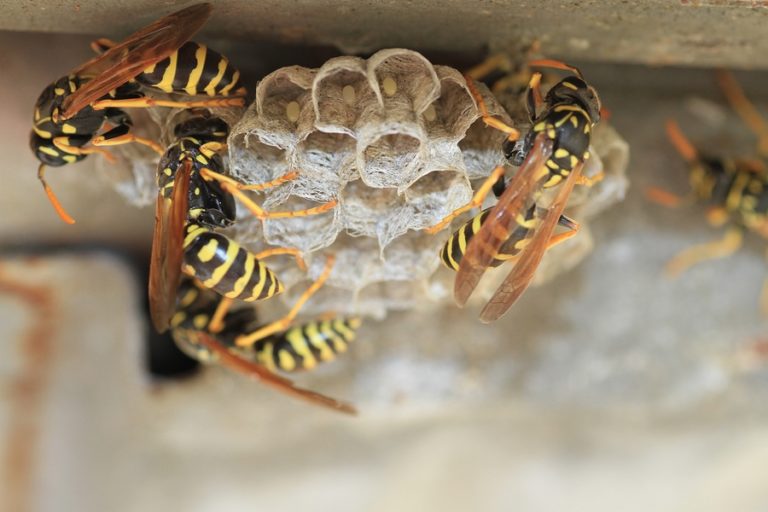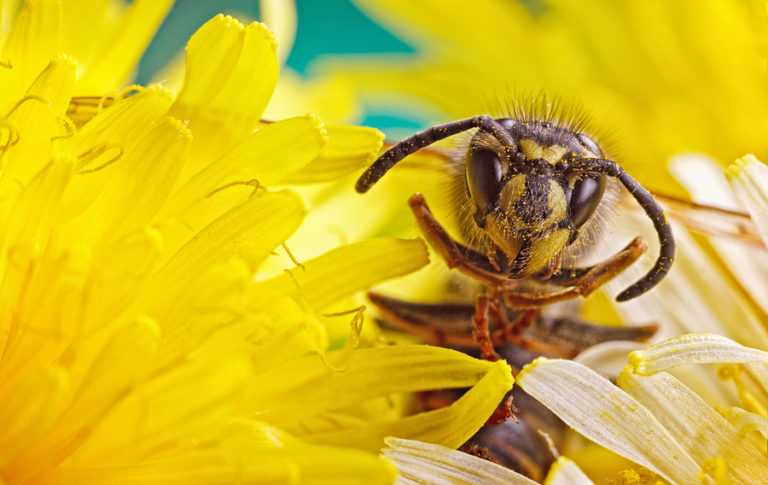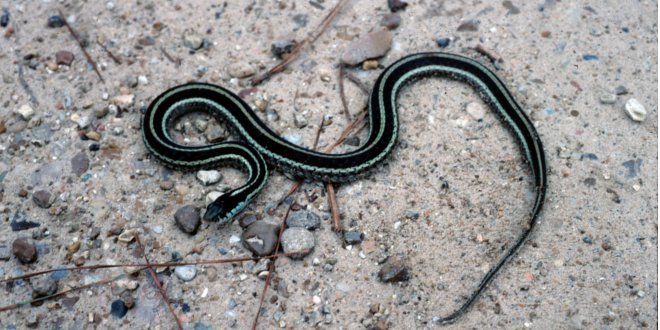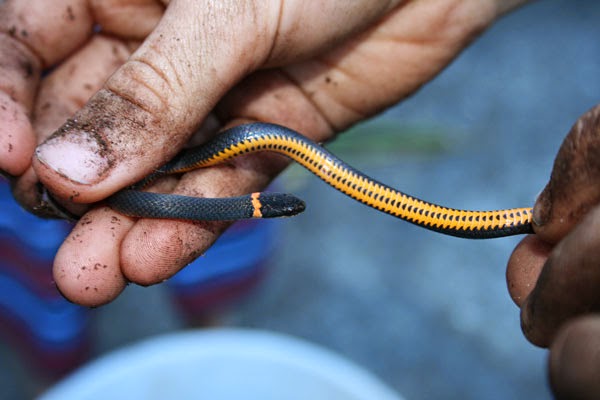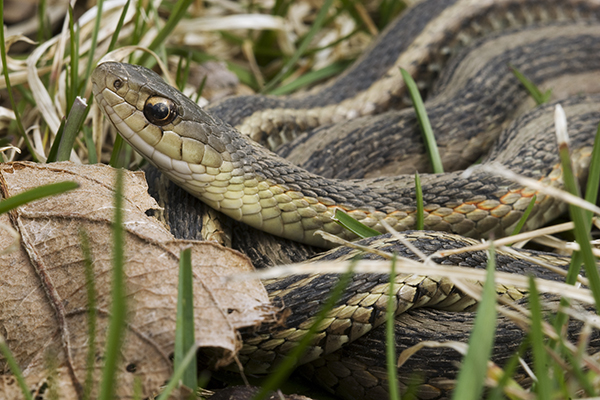Scorpion Identification & Prevention
What are scorpions?
Scorpions are a type of arachnid; like all arachnids, they have eight legs. They have a segmented tail that curves up over their back, and the last segment of their tail has a stinger attached that they use to capture prey or to defend themselves. Because of their venom-filled tails, no homeowner wants to discover living in their yard or home. Scorpions are predators, and feed on a variety of prey, including insects, spiders, other scorpions, and even lizards. A unique fact about scorpions is that they give birth to live young (average litter size is about 31). After being born, they climb onto their mother’s back until they have their first molt and then become independent.
One of the most common species of scorpion living throughout Nebraska is the striped bark scorpion (Centruoides vittatus). These scorpions have a yellow or tan body with two wide, black stripes on the top of their abdomens. Striped bark scorpions have long, slender, claw-like structures they use to capture and hold onto their prey.
Are scorpions dangerous?
Scorpions are poisonous and can be a health risk to people. Worldwide, there are about 1,500 species, and of those, only about 25 species pose significant dangers to people. You should always be careful around scorpions, including the striped bark scorpion. Depending on the sensitivity of a person, a sting could result in pain and localized swelling or a severe reaction that requires medical attention.
Why do I have a scorpion problem?
Striped bark scorpions are active foragers, which means they don’t wait for their prey to happen by; they actively hunt down their prey. Properties with a lot of insect and spider activity are often attractive to scorpions. Scorpions, like any other creature, need water for survival, and they prefer to live in cool, damp areas. When the weather outside becomes too hot and dry, scorpions often move indoors to get out of the heat.
Where will I find scorpions?
Scorpions are mainly outdoor pests that live in sheltered areas that keep them hidden during the day. Scorpions become active at night, hunting for food. Spaces under rocks, logs, firewood piles, and fallen trees are common hideouts for scorpions. They can also be found in flower beds or gardens hidden under dense vegetation or mulch. Many species, including the striped bark scorpion, are excellent climbers, and you’ll find them on trees and on the walls both inside and outside of our homes.

Scorpion
What are scorpions?
Scorpions are a type of arachnid and therefore related to spiders, mites, and ticks. Scorpions have many eyes but poor vision. They rely on touch and vibrations to hunt their prey. They are excellent hunters and, despite being dangerous when living near people, they are beneficial. Scorpions feed on populations of nuisance insects, arachnids, small lizards, and small rodents.
One of the more common species living in our area is the bark scorpion. The bark scorpion is a smaller scorpion species, with adults growing to between two and a half to three inches in length. Their body is a light brown to brownish-yellow color and has darker bands that run lengthwise down their body. Compared to other species of scorpions, their pincers are much thinner and more elongated. They have a slender tail that curves up over their body and has a venom-filled stinger at the end.
Are scorpions dangerous?
The Arizona bark scorpion is the only scorpion living in the United States that causes significant health concerns. While a sting from a bark scorpion can be fatal, that is rarely the case. However, being stung by a bark scorpion should never be taken lightly. Their stings are excruciating and cause symptoms that include numbness, muscle twitching, and difficulty breathing. Young children and the elderly are more likely to have a severe reaction to their venom than a healthy adult.
Why do I have a scorpion problem?
Bark scorpions thrive in the area because of our desert landscape. They will make themselves at home on any property that provides them with ample hiding places, burrowing spots, and prey to hunt. Another reason that bark scorpions are attracted to your property is that it offers them a source of water. Leaky pipes, dripping air conditioners, and clogged gutters provide bark scorpions with areas of cool, damp soil that help them to maintain their moisture needs.
Where will I find scorpions?
Outside, in our yards, scorpions regularly hide behind tree bark, and under things like rocks, logs, fallen trees, woodpiles, and mulch in garden areas. They often live in the soil or on trees located close to our homes. Scorpions excel at climbing, and can easily scale a home’s exterior walls and move inside through torn windows screens, vents, gaps in exterior walls, and spaces around windows or doors. They also move inside through cracks in the foundation or spaces they discover under exterior doors, and regularly invade garages and sheds, hiding in dark corners or moving into boxes and other storage containers.
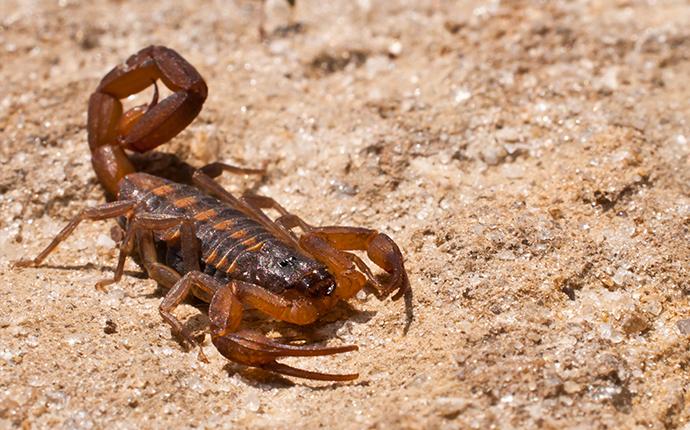
How to get rid of Scorpions
Scorpions can be an issue that many have to deal with. While they may be an issue not all scorpions are the same. There are also different things they are attracted to, different reasons why they may enter your home and special ways that you can provide treatment to get rid of the scorpions.
it can be fairly simple to recognize a scorpion by the shape of a body, but not all scorpions are created equal. There are many different species of scorpions that you will be able to find in fact, there has been an estimation of 3-5 species that you will see
Bark scorpion: These scorpions tend to stay in very dry climates. During the day they hide because they are delicate to the loss of moisture from their body. Most of the water they have in their body the get from their prey. They choose to go indoors when they want to leave the outdoors and generally choose a place that has more food sources. They commonly use a gap they find under doors or ground-level windows; they may also use gaps they’ve found in your foundation.
Striped scorpions: This species of scorpions usually habitat under rocks, debris or boards. They will stay either outdoors or indoors; they are considered to be bark scorpions because they are associated with fallen tree logs, dead vegetation in the earth and human dwellings. These scorpions like most stay out of sight during the day and come out at night. This helps them from losing too much water and it regulates their body temperature.
corpions will feed off of insects, spiders, centipedes, small lizards, snakes, and mice. The majority of the time they will feed on insects and mice, but they don’t have to eat often… they can go without eating for six months.

Practical Guide To Scorpion Control
Whether or not you’ve been stung by a scorpion before, you probably believe us when we say you don’t want these pests in your home. There is a reason many people are scared of scorpions! In order to lower your chances of an encounter with one of these stinging arachnids, keeping them out of your home is a good place to start.
the most common is the bark scorpion, sometimes called the striped bark scorpion. They are pale yellow or tan with two dark stripes on top of their abdomen. Scorpions are easily identifiable by their long, segmented, curved tail. At the end of their tail is the stinger, which they use to inject venom into their victims. Scorpions are nocturnal, so they are most active at night.
Scorpion Dangers
Scorpions are a dangerous pest because their venom can be painful and dangerous for humans. In most cases, a scorpion sting will be sore for a day or two and then may feel itchy for several days. Some people may have a more severe reaction, including swollen limbs, rashes, fever, or more. If you are stung by a scorpion, especially if it’s the first time you’ve been stung, you should seek medical attention.
How To Prevent Being Stung
Scorpions are not especially aggressive toward humans. The vast majority of scorpion stings happen because a person did not see the scorpion and accidentally put a body part in the scorpion’s space. A scorpion will sting because someone steps on them, sits on them, or reaches into an area where they are hiding
The best way to prevent being stung is to practice being more observant and checking for scorpions around your house. Here are some areas where scorpions might be hiding:
in laundry baskets
in beds
in furniture
under sinks
in the back of a cabinet
under a box
in basements and attics
in dark corners of closets
outside under rocks and logs
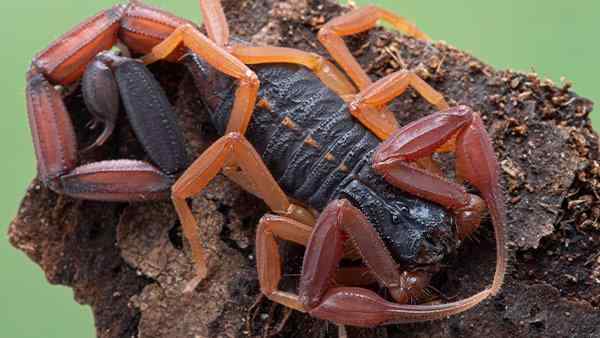
Scorpions
Scorpions are one of the most feared pests in the area! Even the name, Scorpion, sounds like a name from hell.
There are three different types of Scorpions in the area:
Devil Scorpion
Desert Hairy Scorpion and
Bark Scorpion
The Bark Scorpion is a tough creature. When it senses a pest spray, it can sometimes slow down its metabolism big-time. This behavior allows the scorpion to just barely survive while the pest spray dissipates whereupon the scorpion can resume life where it left off. Even when scorpions do encounter enough spray to kill them it can still take up to 2 weeks.
How To Get Rid Of Scorpions
If you have a scorpion problem please call or text us. We have helped many customers get scorpion problems under control over the past 20+ years and we will be happy to help you too.
Tip: One of the most effective ways to quickly limit an active scorpion population is to use a black-light flashlight around the exterior of your home at night to locate scorpions (they glow green under black-light) and spray them directly with specific over-the-counter aerosols that will kill them.
Scorpion Stings
I’ve experienced a scorpion sting personally and it’s not a pleasant thing. If you have infants or children in your home, and you have a scorpion problem, we can provide tips to help you protect your children from scorpion stings while we get your scorpion problem under control
